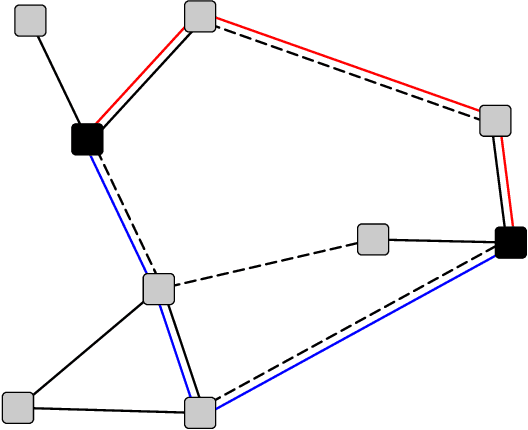Shazia'Ayn Babul
Strong and Weak Random Walks on Signed Networks
Jun 12, 2024



Abstract:Random walks play an important role in probing the structure of complex networks. On traditional networks, they can be used to extract community structure, understand node centrality, perform link prediction, or capture the similarity between nodes. On signed networks, where the edge weights can be either positive or negative, it is non-trivial to design a random walk which can be used to extract information about the signed structure of the network, in particular the ability to partition the graph into communities with positive edges inside and negative edges in between. Prior works on signed network random walks focus on the case where there are only two such communities (strong balance), which is rarely the case in empirical networks. In this paper, we propose a signed network random walk which can capture the structure of a network with more than two such communities (weak balance). The walk results in a similarity matrix which can be used to cluster the nodes into antagonistic communities. We compare the characteristics of the so-called strong and weak random walks, in terms of walk length and stationarity. We show through a series of experiments on synthetic and empirical networks that the similarity matrix based on weak walks can be used for both unsupervised and semi-supervised clustering, outperforming the same similarity matrix based on strong walks when the graph has more than two communities, or exhibits asymmetry in the density of links. These results suggest that other random-walk based algorithms for signed networks could be improved simply by running them with weak walks instead of strong walks.
Link Me Baby One More Time: Social Music Discovery on Spotify
Jan 16, 2024



Abstract:We explore the social and contextual factors that influence the outcome of person-to-person music recommendations and discovery. Specifically, we use data from Spotify to investigate how a link sent from one user to another results in the receiver engaging with the music of the shared artist. We consider several factors that may influence this process, such as the strength of the sender-receiver relationship, the user's role in the Spotify social network, their music social cohesion, and how similar the new artist is to the receiver's taste. We find that the receiver of a link is more likely to engage with a new artist when (1) they have similar music taste to the sender and the shared track is a good fit for their taste, (2) they have a stronger and more intimate tie with the sender, and (3) the shared artist is popular with the receiver's connections. Finally, we use these findings to build a Random Forest classifier to predict whether a shared music track will result in the receiver's engagement with the shared artist. This model elucidates which type of social and contextual features are most predictive, although peak performance is achieved when a diverse set of features are included. These findings provide new insights into the multifaceted mechanisms underpinning the interplay between music discovery and social processes.
 Add to Chrome
Add to Chrome Add to Firefox
Add to Firefox Add to Edge
Add to Edge